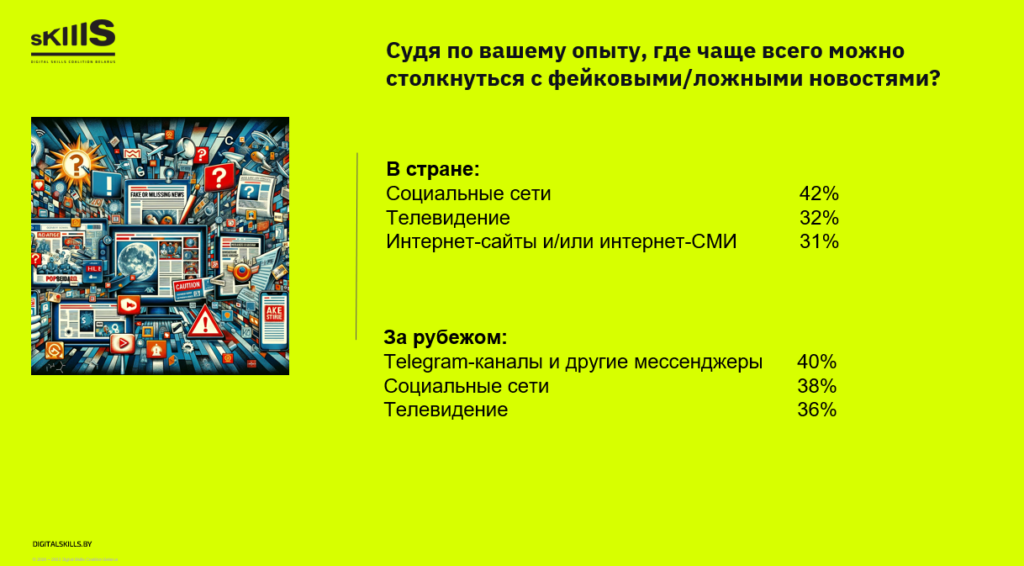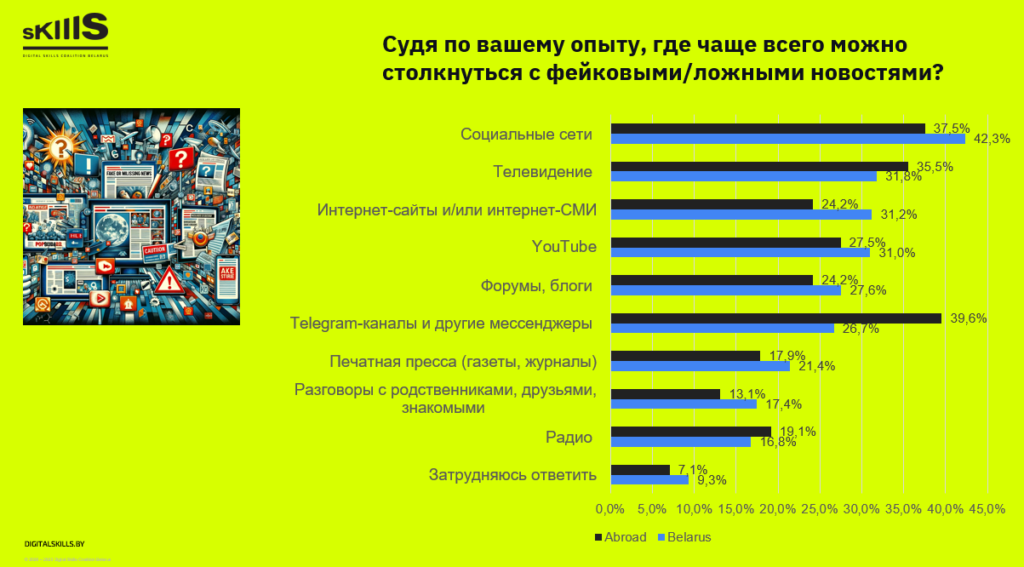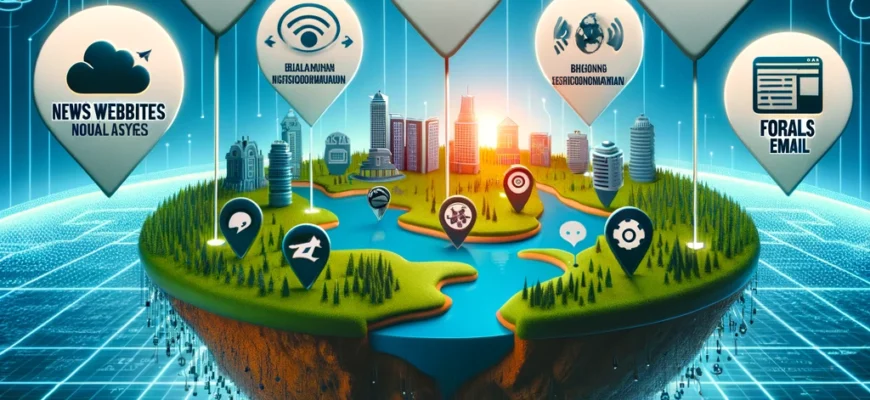April 2nd is annually recognized as International Fact-Checking Day.
A key question is which communication channels are most often associated with encountering misinformation.
Based on the data from the media consumption study of the Belarusian internet audience in the country and abroad, conducted in September-October 2023 by the initiative of the Coalition for Digital Skills and the Belarusian National Platform, let’s look at the results to the question: “Based on your experience, where do you most often encounter fake/false news?”
The main sources named by respondents are:

It can be assumed that one of the reasons respondents in the country named “social networks” as the main source of fake news is because, according to the same study, TikTok has become the most popular network in Belarus as a source of news and other information, where misinformation is encountered quite often.
Distribution across all communication channels:

The important dependence of trust in news sources and other information on the likelihood of encountering disinformation:

Since the media consumption study has been conducted over several years since the beginning of the pandemic, let’s compare the results with the previous year to assess changes:

It can be assumed that in October 2021 a separate question about YouTube as a source of fake news was not asked, which could increase the number of those who named Television.
The media consumption study also asked questions about the ability to identify fakes and the criteria by which respondents assess the unreliability and falsehood of information.
The results of the media consumption study of Belarusians emphasize the importance of regular monitoring and analysis of the information space. This not only helps to identify the main sources of false information but also contributes to the development of effective strategies for fostering critical thinking and media literacy among users. International Fact-Checking Day serves as a reminder of the significance of these efforts. In an environment where social networks, especially TikTok, are recognized as a key channel for the spread of fakes, it is important not only to raise awareness of disinformation but also to actively involve internet users in the verification process.










Comments are closed.